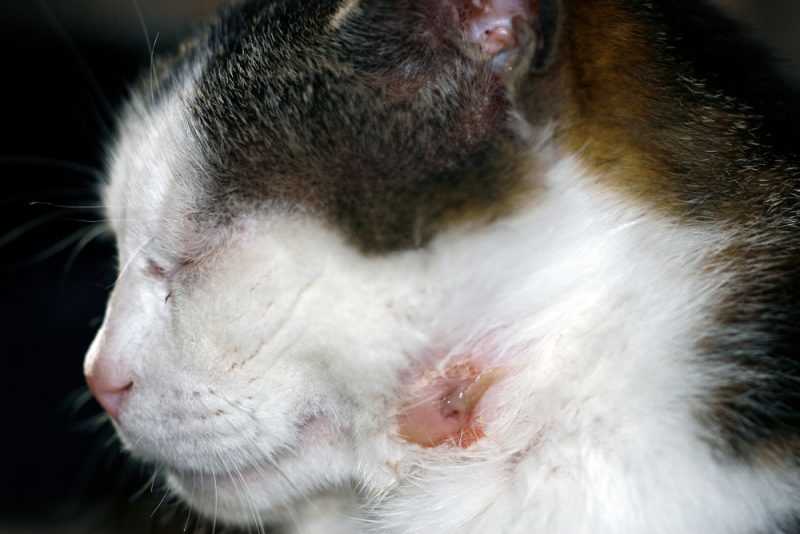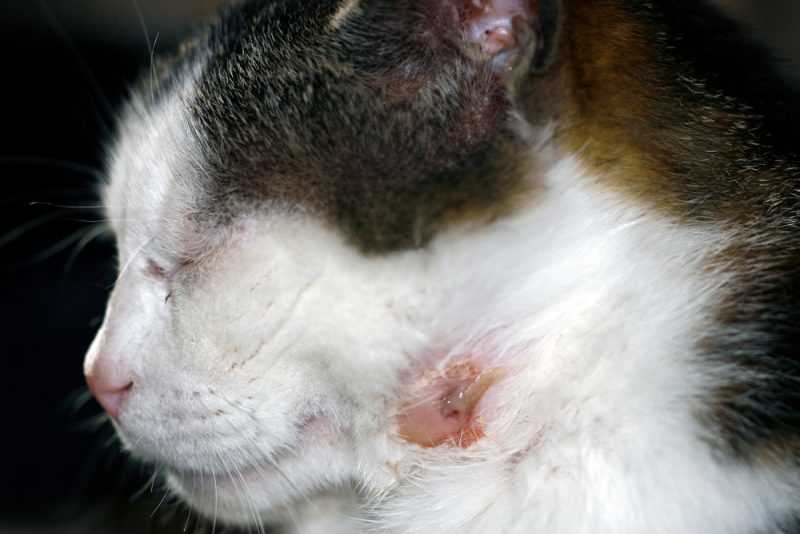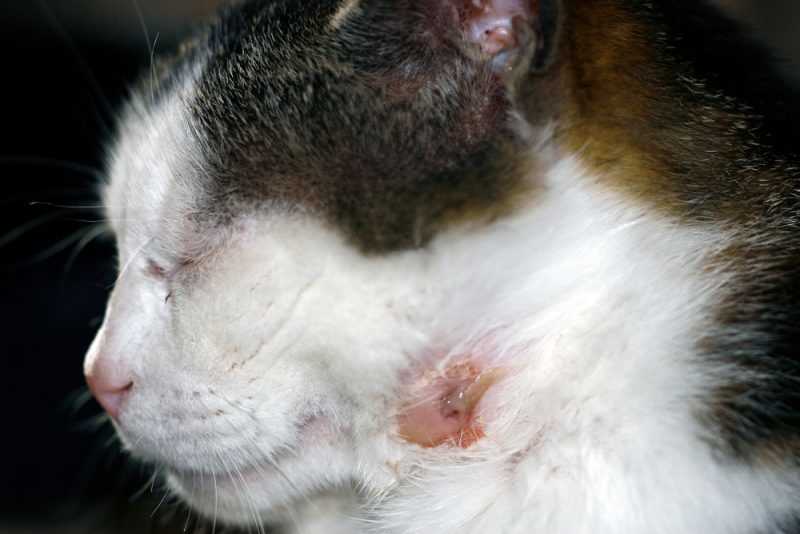If you notice thinning fur or patches on your furry companion, consider a few immediate actions. First, evaluate their diet; ensure it includes high-quality protein and essential fatty acids. A balanced meal is key to maintaining a healthy coat.
Next, examine their grooming routine. Regular brushing not only helps remove loose hairs but also stimulates skin health. If your pal is not keen on grooming, introduce it gradually, using gentle strokes to make it a pleasant experience.
Pay attention to any signs of irritation or discomfort on the skin. Redness, swelling, or excessive scratching may indicate allergies or infections. In such cases, consulting a veterinarian is crucial to identify the underlying issue and determine the right approach.
Lastly, manage stress factors in your environment. Cats can be sensitive to changes, so maintaining a stable atmosphere can promote overall well-being. Creating cozy spaces and providing engaging toys can help your whiskered friend feel secure and happy.
Managing Hair Loss Issues
If you notice thinning fur on my skin, the first step is to identify the cause. Dietary deficiencies can lead to this condition, so ensuring a balanced and nutritious diet is crucial. I recommend including premium cat food rich in protein, omega fatty acids, and essential vitamins.
Regular Grooming

Maintaining a regular grooming schedule is vital. Here’s what you can do:
- Brush my coat at least twice a week to remove loose hair and prevent matting.
- Use a gentle brush to avoid irritating sensitive areas.
- Monitor my skin for any signs of irritation or infection during grooming sessions.
Vet Visits
Consulting a veterinarian is key when dealing with fur loss. They can help diagnose underlying health issues. Be prepared to discuss:
- Any changes in my behavior or eating habits.
- Recent exposure to parasites like fleas or ticks.
- Stress factors that might be affecting my well-being.
Following these steps can help restore my coat to its former glory and keep me comfortable and happy.
Identifying the Cause of Hair Loss in Felines
First, observe the area where the fur is missing. If the skin appears red, inflamed, or has scabs, it could indicate an allergy or infection. Fleas or mites might be the culprits, so check for signs of parasites. Regular grooming and close inspections help in spotting these issues early.
Behavioral Factors

Pay attention to your feline’s habits. Excessive grooming can lead to localized hair loss, often due to stress or anxiety. Changes in the environment, introduction of new pets, or alterations in routine can trigger this behavior. Providing a calm space with familiar items promotes comfort.
Health Conditions
Conditions such as hypothyroidism or fungal infections can also result in patches of missing fur. If you notice a sudden change in your companion’s coat or behavior, a visit to the veterinarian is advisable. They can conduct tests to determine underlying health issues.
Keep a log of any symptoms, changes in behavior, and potential triggers. This information can assist the vet in diagnosing the situation effectively. Regular check-ups ensure your furry friend stays healthy and happy.
Home Remedies for Treating Cat Bald Spots
I’ve discovered some natural methods that can help improve those unsightly areas on my fluffy friends. Here are a few remedies I’ve found effective:
Aloe Vera Gel
Aloe vera is soothing and can promote healing. I apply a small amount of pure aloe vera gel directly to the affected area. This not only helps with irritation but also provides moisture to the skin.
Coconut Oil
Coconut oil has antibacterial and antifungal properties. Massaging a little coconut oil into the skin can help with inflammation and dryness. It’s tasty too, so I make sure to keep an eye on my buddy to prevent licking it all off!
| Remedy | Benefits |
|---|---|
| Aloe Vera Gel | Soothes and hydrates skin |
| Coconut Oil | Antibacterial, antifungal, and moisturizing |
| Apple Cider Vinegar | Balances pH and reduces itching |
| Olive Oil | Moisturizes and nourishes the skin |
Mixing equal parts of water and apple cider vinegar can create a gentle solution to spray on the area, which helps balance the skin’s pH and reduce any itching. Just be careful not to soak it too much!
Olive oil is another great option. A little dab on the skin can provide nourishment and moisture, keeping the area soft. It can also help when my pal’s fur starts to grow back.
It’s crucial to monitor for any signs of irritation or infection. If things don’t improve or worsen, a trip to the vet is always a good idea. Keeping my friends comfortable and happy is what matters most!
When to Consult a Veterinarian for Hair Loss
If you notice patches of missing fur on my coat, it’s crucial to seek veterinary help immediately. Signs indicating a need for professional evaluation include persistent scratching, signs of infection like redness or discharge, and any noticeable behavioral changes such as increased lethargy or appetite changes.
If the areas of fur loss spread or if I develop any skin lesions or sores, don’t hesitate. These could be symptoms of underlying health issues requiring prompt attention. Additionally, if you observe excessive grooming or licking, it may signal stress or discomfort that warrants a vet’s expertise.
For any sudden appearance of fur loss, especially if paired with symptoms like vomiting, diarrhea, or weight loss, a visit to the vet is essential. These could indicate allergies, parasites, or other medical conditions that need immediate care.
Regular check-ups are beneficial too. If I am diagnosed with conditions like allergies or skin disorders, staying on top of my health with routine vet visits can prevent further issues. Always trust your instincts; if something seems off, it’s better to consult a professional.
Recommended Medications for Cat Hair Loss

For addressing thinning areas, specialized topical treatments containing ingredients like minoxidil or finasteride may be beneficial. These are known to promote hair regrowth in certain cases. Always consult a veterinarian before use to ensure safety and appropriateness for individual circumstances.
Oral medications such as corticosteroids can help reduce inflammation related to various skin conditions, potentially improving the situation. Antihistamines might also be prescribed to alleviate allergic reactions that contribute to fur loss.
For fungal infections, antifungal drugs are essential and can effectively eliminate the underlying cause of hair abnormalities. In cases of parasites, treatments like topical flea and tick preventatives or oral medications can resolve infestations.
Supplements rich in omega-3 and omega-6 fatty acids can support skin health and overall coat condition. These can be found in various forms, including oils and capsules.
Always monitor for side effects when introducing any new medications and maintain open communication with your vet to ensure optimal care. For more information on how treatments interact with bodily functions, check out this link on where are receptor proteins located.
Preventive Measures to Avoid Hair Loss in Cats
Regular grooming is key. I make it a point to brush my fur daily to remove loose hairs and prevent matting. This routine helps maintain healthy skin underneath.
Nutrition plays a big role. A diet rich in omega-3 and omega-6 fatty acids can promote a shiny coat and skin health. I enjoy meals with fish oil and chicken, which keep my fur looking great.
Hydration is crucial. I always have fresh water available. Staying hydrated supports skin moisture and overall health, reducing the chances of irritation.
Stress Management

Creating a calm environment can help. I have cozy spots to relax and plenty of toys to keep me entertained. Reducing stress can prevent excessive grooming and skin issues related to anxiety.
Regular Vet Check-ups
Routine veterinary visits are important. Regular health checks can catch issues early, including skin conditions or allergies that could lead to hair loss. My human makes sure I see the vet at least once a year.
Caring for Your Cat’s Skin During Treatment
Focus on keeping the affected area clean and moisturized. Use a mild, fragrance-free cleanser suitable for felines to gently wash the skin. Make sure to rinse thoroughly to avoid any residue that could irritate the skin further.
Apply a veterinarian-recommended moisturizer that is safe for furry friends. Look for products containing natural ingredients like aloe vera or oatmeal, which can soothe irritation and promote healing.
Monitor your kitty’s diet. Nutrition plays a significant role in skin health. Consider incorporating high-quality food that supports skin and coat condition. I recommend checking out the best cat food for underweight cats for optimal nutrition options.
Ensure your friend avoids excessive licking or scratching at the affected region. You might need to use an Elizabethan collar or protective garment to prevent further irritation. Regularly trim the fur around the area to keep it clean and reduce the risk of infections.
Keep an eye on the environment. Make sure your surroundings are free from allergens that could exacerbate the condition. Regularly clean bedding and any areas where your furry companion spends time.
Provide regular grooming sessions. This helps remove dead hair and skin cells while promoting blood circulation. Use a gentle brush to avoid causing any discomfort.
Always stay observant. If you see any signs of worsening conditions, such as increased redness, swelling, or discharge, consult a veterinarian for further insight and advice.
FAQ:
What are the common causes of bald spots in cats?
Bald spots in cats can be caused by several factors, including allergies, parasitic infections, fungal infections, and stress-related behaviors. Allergies may arise from food, environmental allergens, or flea bites, leading to excessive scratching and hair loss. Parasites like fleas and mites can also irritate the skin, resulting in bald patches. Fungal infections, such as ringworm, are another possible cause. Additionally, stress or anxiety can lead to over-grooming, where cats lick their fur excessively, leading to baldness.
How can I identify if my cat’s bald spots are due to an allergy or something else?
To determine if your cat’s bald spots are allergy-related, observe for other symptoms such as itching, redness, or inflammation on the skin. Pay attention to any recent changes in diet, environment, or exposure to new products. If the bald spots are accompanied by excessive scratching or biting, allergies are likely. However, it’s advisable to consult a veterinarian for a proper diagnosis. They may perform tests to rule out parasites or infections and recommend appropriate treatment based on the underlying cause.
What steps should I take if I notice bald spots on my cat?
If you notice bald spots on your cat, the first step is to examine the affected area for signs of irritation or infection. Check for redness, swelling, or scabs. Avoid self-diagnosing and consider scheduling a visit to the veterinarian. They will likely conduct a thorough examination and may suggest skin scrapings or allergy tests. In the meantime, keep your cat from excessive grooming by providing distractions or using an Elizabethan collar. Follow any treatment plan your vet prescribes, which may include medications or dietary adjustments.
Are there any home remedies for treating bald spots in cats?
While it’s always best to consult a veterinarian, some supportive home remedies can help soothe your cat’s skin. For instance, applying a small amount of coconut oil may help moisturize dry, irritated skin. Additionally, ensuring your cat has a balanced diet rich in omega fatty acids can promote healthy skin and fur. Herbal supplements, like chamomile or calendula, may also provide relief. However, these should only be used after discussing them with your vet to avoid any adverse reactions or interactions with medications.
Can stress cause bald spots in cats, and how can I help reduce their stress?
Yes, stress can lead to bald spots in cats, primarily through over-grooming behaviors. If your cat is experiencing stress due to changes in their environment, new pets, or loud noises, you can help by creating a calm and safe space for them. Provide plenty of hiding spots, interactive toys, and regular playtime to keep them engaged. Additionally, consider using calming products like pheromone diffusers or sprays. If stress persists, it may be beneficial to consult with a veterinarian or a feline behaviorist for further guidance.






